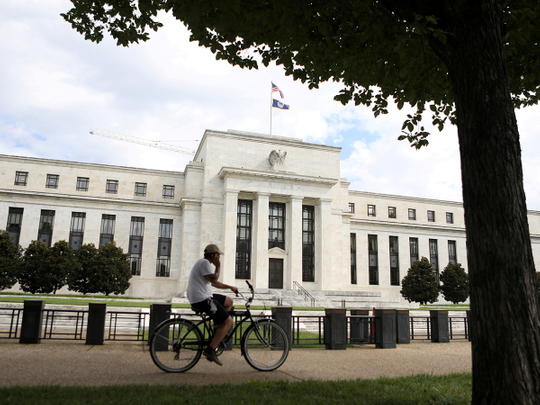
The Federal Reserve seems to be achieving the fabled soft landing. With growth likely to transition down toward the longer-term trend in 2019, expect monetary policy to remain on hold for the foreseeable future. If the Fed were to move, the odds still favour an interest-rate cut over an increase. We are likely at the peak of this rate hiking cycle.
Recent commentary centres around a consensus that the current policy rate of 2.25 per cent to 2.50 per cent is just about right. To be sure, not everyone thinks this is exactly correct. Economists at Goldman Sachs think the next move is a notch higher, but not until late 2020. Allianz chief economic adviser Mohammad Al Erian thinks the Fed has swung “too dovish.” Former Minneapolis Federal Reserve President and Bloomberg Opinion columnist Narayana Kocherlakota argues the Fed should cut rates to preserve the expansion. Different ideas about the direction of rates, but all suggestive of fairly minor adjustments to the current policy setting.
The Treasury market yield curve backs up the consensus. The relative flatness of the curve through the 10-year horizon suggests market participants expect monetary policy to remain fairly constant. There is simply no data to suggest rates need to break dramatically one way or the other. This would be consistent with the soft-landing forecast of Chicago Federal Reserve President Charles Evans, who expects to “see growth falling, but still being close to trend; continued healthy labour markets; and inflation consistent with our 2 per cent target” in 2019.
With the soft-landing scenario looking increasingly likely, the Fed’s focus shifts to sustaining the expansion. Lacking any clear direction from the data, it is reasonable to believe that the odds of the Fed’s next move are equally weighted between a rate hike and cut. The softening of inflation, however, combined with a general review of the Fed’s policy strategy argues for a rate cut over a rate hike as the Fed’s next move.
The minutes of the Fed’s March meeting revealed that “many” participants found muted inflation pressures “noteworthy,” while “several” identified softer inflation expectations as possibly making it difficult to reach the Fed’s inflation target. In the press conference that followed that meeting, Chairman Jerome Powell admitted the Fed had failed to convincingly meet its symmetric target in recent years. Responding to these subpar inflation outcomes, Evans believes the Fed needs to be willing to “communicate comfort with core inflation rates of 2-1/2 per cent” and to take policy action appropriate to such a strategy.
Going beyond inflation, the Fed is also rethinking its approach to meeting the employment mandate. The fact that low unemployment has yet to trigger faster inflation has induced policymakers to reduce their estimates of the lowest unemployment rate consistent with steady inflation. Moreover, there is a growing awareness that the Fed’s inflationary fears come at the expense of workers in the form of high unemployment, which in turn inadvertently shifts the balance of power away from labour and weakens wage growth.
In addition, it is hard to ignore the fact that from a political perspective, the Fed’s independence is under attack. Those attacks will only gain additional traction if the Fed slips up and trips the economy into recession, which is a real possibility.
Under these conditions, a soft-landing does not mean the probabilities of a rate hike equal those of a cut. Instead, the Fed will err on the dovish side of policy. After seeing inflation approach its 2 per cent target and then fall back multiple times during this expansion, the Fed will now tend toward Evans’ position and actually need to see above target before raising rates again. That alone substantially reduces the odds of another rate hike. The past history of excessively high unemployment plus growing political threats means the Fed will be increasingly unwilling to risk recession and will look for reasons to at least avoid hiking rates. That leaves the risks weighted toward more dovish than hawkish policy in the months ahead.











